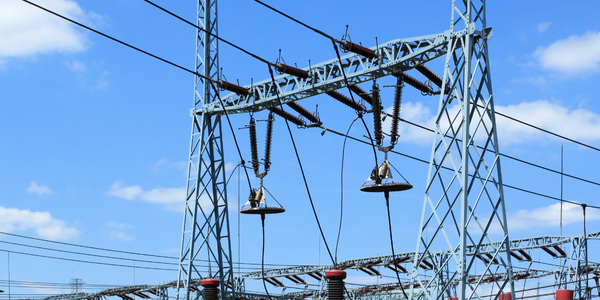Technology Category
- Infrastructure as a Service (IaaS) - Cloud Computing
- Platform as a Service (PaaS) - Application Development Platforms
Applicable Industries
- Electrical Grids
- Life Sciences
Applicable Functions
- Product Research & Development
Use Cases
- Smart City Operations
Services
- System Integration
About The Customer
The Toulouse Midi-Pyrénées Genopole is a research program set up in 1999 in southern France as part of the National Genopole Network. The initiative has drawn together a mix of public laboratories, biotech companies, and educational institutions at seven locations across France. The Toulouse Genopole comprises thirty academic laboratories, with some 3,000 researchers working in five basic fields: Microbiology, plants and animals, health, ethics, and bioinformatics. The Genopole’s bioinformatics resources are hosted by the Toulouse INRA (National Agronomic Research Institute) computing center. The Genopole serves four kinds of users: Biologists who access bioinformatics tools through the platform’s open website, UNIX-literate biologists who run bioinformatics tools in console mode, software engineers developing new interfaces and workflow systems for large-scale genomics or bioinformatics programs, and scientists developing new algorithms and methodologies for gene detection, comparative genomics, microarray analysis, sequence searches and other fields.
The Challenge
The Toulouse Midi-Pyrénées Genopole, a research program established in 1999 in southern France, was facing a significant challenge. The program, which is part of the National Genopole Network, was dealing with an increasing number of complete genome sequences that required more processors and intensive utilization. The initial compute platform for bioinformatics at the Toulouse Genopole was a four-processor Dell server, later supplemented by a four-CPU IBM system. However, these resources were insufficient for the ambitious bioinformatics program and the researchers developing bioinformatics tools in three Genopole-connected laboratories. The demand for computational resources was steadily increasing, and the existing infrastructure was unable to keep up.
The Solution
To address this challenge, Altair provided a powerful workload manager with Job Arrays to increase the power and user-friendliness of Toulouse Genopole's systems. Job Arrays, a feature of Altair's PBS Professional workload management software, allows users to submit and manage a group of jobs as a single job. This feature is particularly useful in large-scale bioinformatics studies. The French Altair team worked with the Genopole to integrate their bioinformatics applications with the Job Arrays function. The software was installed on INRA’s LNXI Opteron cluster when it was upgraded to 96 processors and came online in January 2006. Looking ahead, INRA has implemented web-based services into its HPC platform at Toulouse Genopole and is attracting new visitors. With help from Altair, the web interface will soon be integrated with PBS Professional to manage job submission from remote users.
Operational Impact
Quantitative Benefit

Case Study missing?
Start adding your own!
Register with your work email and create a new case study profile for your business.
Related Case Studies.

Case Study
Hydro One Leads the Way In Smart Meter Development
In 2010, Ontario’s energy board mandated that time-of-use (TOU) pricing for consumers be available for all consumers on a regulated price plan. To meet this requirement, Hydro One needed to quickly deploy a smart meter and intelligent communications network solution to meet the provincial government’s requirement at a low cost. The network needed to cover Hydro One’s expansive service territory, which has a land mass twice the size of Texas, and its customers live in a mix of urban, rural, and remote areas, some places only accessible by air, rail, boat or snowmobile. Most importantly, the network needed to enable future enterprise-wide business efficiencies, modernization of distribution infrastructure and enhanced customer service. To meet these needs, Hydro One conceptualized an end-to-end solution leveraging open standards and Internet Protocols (IP) at all communication levels. The utility drew upon industry leaders like Trilliant to realize this vision.

Case Study
Selling more with Whirlpool
Whirlpool wanted to add connectivity to appliances and transform the company's relationship with customers. Traditionally, Whirlpool interaction with customers was limited to purchases made once every ten years. Connected washer and dryers provide exciting new features like remote management of start times and inter-machine communication.

Case Study
SAS® Analytics for IoT: Smart Grid
Companies face falling revenues, rising infrastructure costs, and increasing risk of outages caused by inconsistent energy production from renewable sources. Less money is coming in as more people and organizations take steps to curb their energy use. Utilities are paying more to maintain and build infrastructure due to increasing complexity, resulting from the rising number of intermittent and variable renewable energy sources connected in the distribution grid.

Case Study
Enel Secures Italian Power Generation Network
Electric energy operators around the world are working to increase the reliability and cyber resiliency of their systems. This includes Enel, a global power company that manages and monitors the Italian power grid. This grid:• Serves 31 million customers• Has a net installed energy capacity exceeding 31 gigawatts• Includes more than 500 power generation plants,including hydroelectric, thermoelectric, and wind• Is managed and monitored by Enel 24/7/365• Is operated by Terna, the Italian Transmission System Operator (TSO)Enel is responsible for the availability of the grid’s underlying ICS and industrial network. It also manages Regional Control Centers and Interconnection Centers which connect with the TSO. The TSO manages the flow of energy to the grid plus controls and remotely regulates the power generation of power plants, increasing and decreasing power production as required. The complex system of interaction and cooperation between Enel and the TSO has strong security implications as well as operational and business challenges.

Case Study
IoT based Energy Quality Availability Monitoring Solution
There were several challenges faced:Since this data would be in the public domain, accuracy and authenticity of this data were of paramount importance. It should be able to withstand scrutiny.It is challenging to build an appliance that can withstand a wide range of voltage fluctuations from as low at 90v to as high as 320v. Since the device would be installed in remote locations, its resilience was of paramount importance.The device would have to deal with poor network coverage and have the ability to store and re-transmit data if networks were not available, which is often the case in rural India. The device could store up to 30 days of data.The platform that deals with the data should be readily available and highly reliable and never lose a packet of data.

Case Study
Hydro Utility Builds Foundation for Powerful Efficiencies and Protection
As the main British Columbia electric distributor, BC Hydro provides 1.9 million residential, commercial, and industrial customers with energy. The hydro utility transformed to a digital business with Cisco connected networking, security, and smart grid solutions. • Deliver reliable, high-quality services • Enable remote automation and monitoring • Connect applications over a common networking infrastructure



